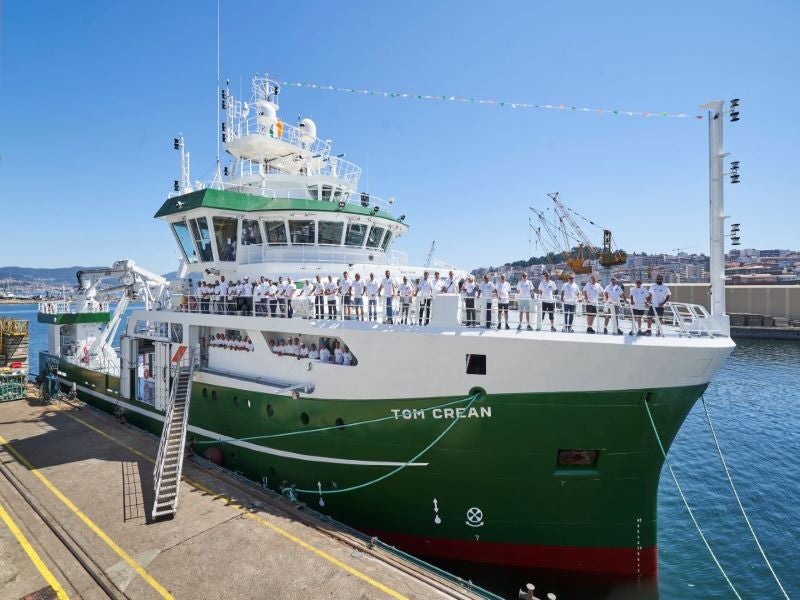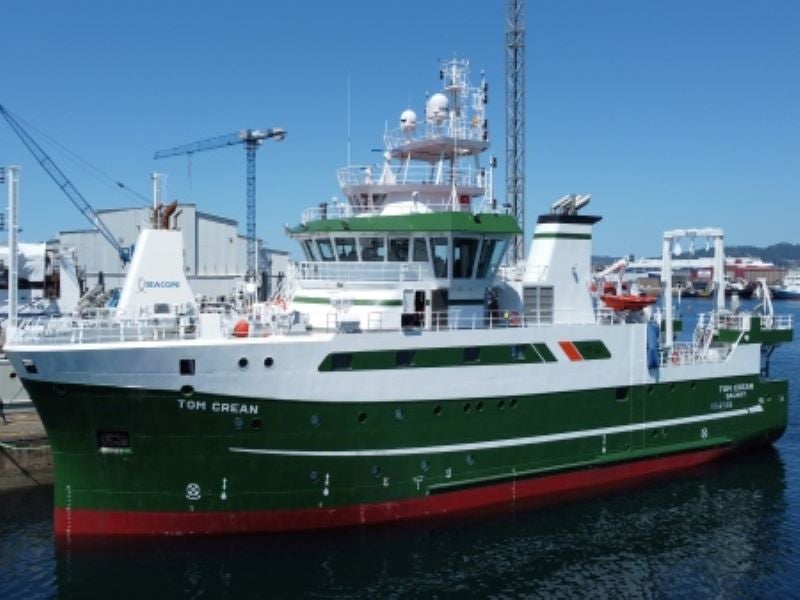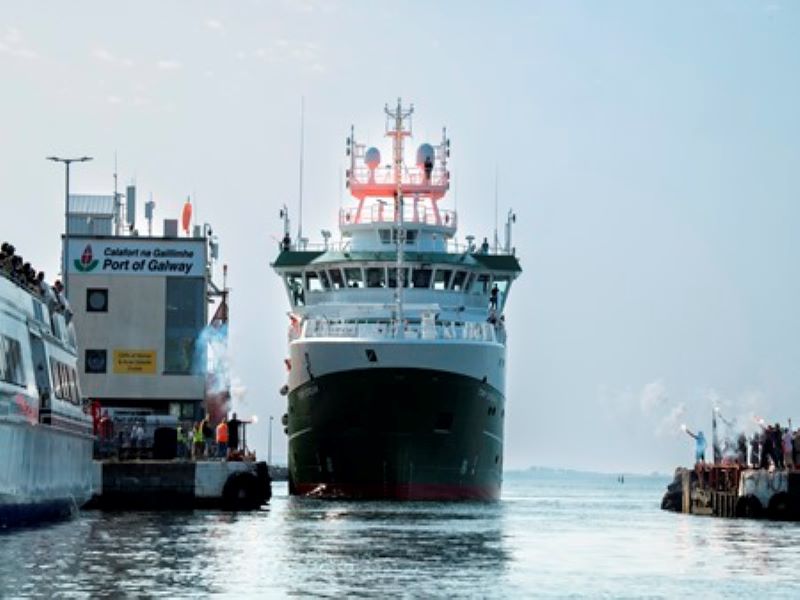RV Tom Crean is a new multi-purpose research vessel (RV) built for Ireland’s state-owned marine research and development agency Marine Institute. The new vessel is a replacement for Ireland’s first purpose-built research vessel, RV Celtic Voyager.
The vessel will be used for research operations at sea for 300 days a year.
To be based in Galway, Ireland, the RV Tom Crean will be used by the Marine Institute and other state agencies and universities to conduct multi-disciplinary surveys. It will also be used to deploy weather buoys, observational infrastructure, and remotely operated vehicles (ROVs).
The new marine research vessel was named in honour of Irish seaman and explorer Tom Crean, who served in three Antarctic expeditions in the early 20th Century.
The marine research vessel will undertake research and surveys in the areas of fisheries, climate change, seabed mapping and oceanography, and environmental monitoring. It will also provide deep-water survey capabilities and support increased research in the Atlantic Ocean.
The keel-laying ceremony was held in November 2020, while the ship’s hull was completed in September 2021 and launched in November 2021.
The vessel arrived at the Port of Galway in July 2022, while official commissioning is due to take place in Autumn 2022.
Design and features
Designed to operate in harsh sea conditions, the RV Tom Crean has a length of 52.8m, a beam of 14m, and a draught of 5.2m. It can accommodate 12 crew members and 14 scientists.
Its hull is made of 32 individual units and is painted in the same signal green colour as Marine Institute’s RV Celtic Explorer and RV Celtic Voyager.
The vessel is fitted with a 180° A-Frame to perform either load handling or the launch and recovery of special equipment.
It features a dynamic positioning (DP1) system and is also equipped with an anti-roll system. The multi-purpose design allows for a removable net drum to increase deck space.
The RV Tom Crean can accommodate three 20ft containers. It can deploy ROVs and autonomous underwater vehicles (AUVs) to undertake the exploration of oceans up to 3,000m deep.
The modern research vessel will provide a silent operation, meeting the requirements of the International Council for the Exploration of the Sea (ICES) 209 noise standard for fisheries research. The vessel will draw power from onshore power facilities and shut down all onboard generators while at port to reduce fuel consumption.
The new vessel will have an endurance of at least 21 days at sea and an operational range of 8,000 nautical miles.
Oceanographic capabilities
RV Tom Crean is equipped with a conductivity temperature and depth (CTD) system with a 24-bottle carousel and a 4,500m wire.
A heave compensation system is installed to enable the equipment to operate effectively even during the heavy motion of the ship.
The vessel features a CTD hangar, a CTD laboratory and a controlled temperature chemical laboratory. Other features include a bow mast to accommodate meteorological sensors, an oceanographic winch to support towed samplers, and a hydrographic winch for plankton sampling.
Fisheries Survey equipment
The RV Tom Crean is equipped with an EK80 fisheries echosounder mounted on a drop keel, a SU92 omni-directional sonar, and an FS 70 headline system. An oceanographic winch with a 2,500m wire is installed for egg and larval surveying.
The vessel can trawl up to 25t with a 2,500m-long, 22mm-diameter trawl wire. Onboard equipment to support trawling includes two 7m³ split net drums, a 9m³ net drum and a headline winch with a 2,500m headline wire.
A Q5/oceanographic winch and a Sonardyne Ranger 2 ultra-short baseline (USBL) system are installed to support underwater television (UWTV) surveys. The vessel also has a dedicated video playback lab.
The 36.7m² fish laboratory is equipped with four measuring stations, a 6m-long conveyor system, a freezer, and a separate 6m² freezer store.
Hydrographic and geological survey capabilities
The vessel is equipped with an EM2040 dual head multi-beam echosounder and an EM2040 single head on the drop keel. It can also accommodate an EM712 1 x 1-degree multi-beam and Knudsen 3260 9 x 3.5Khz, 1 x 12Khz moving vessel profiler (MVP).
The onboard equipment for hydrographic and geological surveys also includes a Seapath 380 RGC 3 /RGC 2 high-altitude platform system (HAPS), a Cnav high-precision global positioning system (GPS), and a Sonardyne Ranger 2 USBL.
The vessel can also accommodate a 12m piston /gravity core, a 6m Vibrocorer, and a cone penetration testing (CPT) system.
Propulsion
The ship draws power from two 1,350kW and one 400kW generators. The propulsion system also includes a 2,000kW main propulsion motor, a 780kW bow thruster, and a 400kW stern tunnel thruster.
Contractors involved
The contract for the construction of the vessel was awarded to the Spanish shipyard Astilleros Armon Vigo in 2019.
Skipsteknisk, a ship design consultant based in Norway, provided the design for the ship.
The vessel will be managed and operated full-time by P&O Maritime Logistics on behalf of the Marine Institute.










